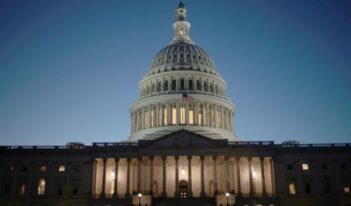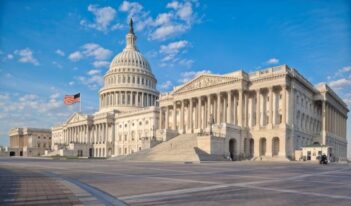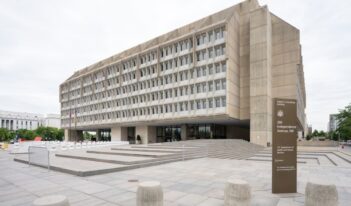
Court sides with insurance companies in cost-sharing subsidies class action despite their use of “silver loading.”
When President Donald J. Trump published a 21-word tweet in the early hours of October 13, 2017, he probably did not realize that he had laid the foundation for years-long litigation with the U.S. health insurance industry.
The President’s tweet, which appeared shortly after the U.S. Department of Health and Human Services (HHS) had issued a press release announcing the halting of cost-sharing reduction subsidies to health insurers, boldly proclaimed that the federal government had stopped making “massive subsidy payments” to “pet insurance companies.”
It did not take long for Common Ground Healthcare Cooperative to file a federal class-action lawsuit—now with nearly 100 members—arguing that it was entitled to billions of dollars in damages resulting from the Trump Administration’s halting of these subsidies.
At the end of October, the federal judge hearing the class-action case, Judge Margaret M. Sweeney, ordered HHS to pay nearly $1.6 billion in damages to the class.
Beginning in 2013, cost-sharing reduction (CSR) subsidies were paid to insurance companies to reduce deductibles, co-payments, and coinsurance for households making between 100 and 250 percent of the federal poverty level who purchased a silver-tiered plan on the insurance exchanges created by the Patient Protection and Affordable Care Act (ACA). Silver-tiered plans are those offered on the exchanges that, on average, cover 70 percent of an insured’s medical costs, with the remaining 30 percent coming from the insured’s wallet.
The ACA imposes a bright-line requirement on insurance companies to offer plans with lower deductibles and copayments to eligible households. To stave off substantial losses to the health care industry, the ACA created CSR subsidies for these plans, providing that HHS “shall make periodic and timely payments” to insurance companies “equal to the value of the reductions,” essentially reimbursing them for the discounts they offer to low-income individuals.
The ACA left unclear, though, where the government would get the funds to make the CSR subsidies. In 2014, the U.S. House of Representatives sued HHS to stop the CSR subsidy payments on the ground that the ACA does not contain an explicit congressional appropriation. The court agreed, and the Trump Administration cited that decision when it ordered the halt of CSR subsidies in October 2017.
Earlier this year, however, Judge Sweeney disagreed, entitling the class of insurers to damages because appropriations “merely constrain government officials’ ability to obligate or disburse funds.” Thus, a lack of congressional appropriation does not destroy the government’s statutory obligations.
More controversial is Judge Sweeney’s finding that the government is liable despite the fact that health insurers have used a technique called “silver loading.” Silver loading involves relying on another ACA exchange subsidy, the premium tax credit, which lowers monthly premiums for households making 100 to 400 percent of the federal poverty line.
When the Trump Administration announced its cessation of CSR subsidies, the ACA’s requirement for insurance companies to offer CSRs to eligible households nevertheless remained. To make up for the lost revenues that would otherwise come from CSR subsidies, many health insurance companies raised the premiums of their silver-tiered exchange plans—they “loaded” the costs of CSRs into these plans. Because the value of any premium tax credit is calculated based on the cost of the second-lowest silver-tiered plan, higher premiums paid by consumers on silver plans generally means higher overall premium tax credits available to consumers or received by insurance companies.
Premium tax credits are available to a wider range of households on the insurance exchanges. Whereas only those earning between 100 to 250 percent of the federal poverty line who purchase a silver plan can receive CSRs, households between 100 and 400 percent of the federal poverty line who purchase any plan can receive premium tax credits.
Insurance companies’ use of silver loading seems to have been a deft response to the Trump Administration’s rollback of CSR subsidies. The Congressional Budget Office has estimated that since the Trump Administration ended CSR subsidies, 2 million to 3 million more people have purchased or will purchase plans offered on the ACA exchanges per year than if the CSR subsidies remained in place. Net premiums have remained largely unchanged for silver plans—as premium tax credits rise proportionately—but one statistical analysis has found that silver loading has led to $1,085 in annual premium savings for the average eligible 45-year-old for non-silver plans.
That said, another analysis also found that, although federal spending on CSR subsidies could be as high as over $8 billion, under the current silver loading regime, the federal government could be paying over $6 billion more than it would if it were simply to restore CSR subsidies.
In the class action litigation, the government argued that the insurers would be granted a windfall if the court held that they were entitled to unpaid CSR subsidies in light of their use of silver loading. Judge Sweeney, however, was not convinced by the government’s arguments, eventually granting the $1.6 billion judgment for the insurer class. Other health insurers have obtained judgments totaling almost $100 million in unpaid CSR subsidies in separate lawsuits, which are currently on appeal in the U.S. Court of Appeals for the Federal Circuit.
The Centers for Medicare and Medicaid Services (CMS), the federal agency that administers the ACA marketplace subsidies, could attempt to restrict silver loading by requiring insurance companies to spread the cost of CSRs among all plan types. Experts predict that this solution would lead to “significant changes in the lived experience of the ACA for subsidized buyers in most states.”
CMS opted against prohibiting the practice of silver loading for the year 2020, but “sought comment on ways in which HHS might address silver loading, for potential action in future rulemaking applicable not sooner than plan year 2021.”
The outcome of the CSR litigation may rest upon the fate of a similar case involving risk corridor payments, the purpose of which was to attract insurance companies to participate in ACA exchanges. In that litigation, the government argues that it is not required to make full payments under the risk corridor program because Congress passed a specific appropriations rider blocking CMS from using program management funds. After the Federal Circuit agreed with the government by a 2–1 margin, the U.S. Supreme Court agreed to hear the case, with oral argument held on December 10.
In the class action, the government has until December 23, 2019 to file a notice of appeal of Judge Sweeney’s order.



